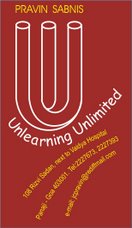Training sessions are enhanced by the use of appropriate videos. One of personal favourites - a video created in 2007 as part of the Lead India Campaign launched by the Times of India Group – is an excellent example of ‘taking initiative’. It can be easily viewed on the internet: http://www.youtube.com/watch?v=pFs5vWxW-vc
The early morning traffic is blocked by a fallen tree. On either side, people await a solution to the problem. But a young child drops his school bag and ventures to push aside the big tree. The onlookers, one by one start joining him and together they are able to shift the obstacle. Obviously they were inspired by the initiative of the proactive child.
Surely, the child did not have a false estimation of his own strengths and abilities. Yet he initiated action since it was needed. Taking initiative is not about measuring up to achievable tasks. Taking initiative is about taking up a worthwhile mission. It is about stepping out of our comfort zone and taking up the responsibility to set right a situation. Proactive persons do not wait for others to join their action… they show the way by taking initiative and thus inspire others to join along.
However, it is not enough to start off. A famous Buddha quote identifies two mistakes while walking the road (to truth)… one is not starting and the second is not going all the way. So many good initiatives are reduced to nought because people give up before the initiative is actualised. We must choose to be better at sustaining a continuous commitment to the initiative we take on or the one we join in. And we must overcome our own negative thoughts and doubts.
Let’s BE BETTER at taking initiative
By overcoming every looming negative!
- Pravin K. Sabnis


